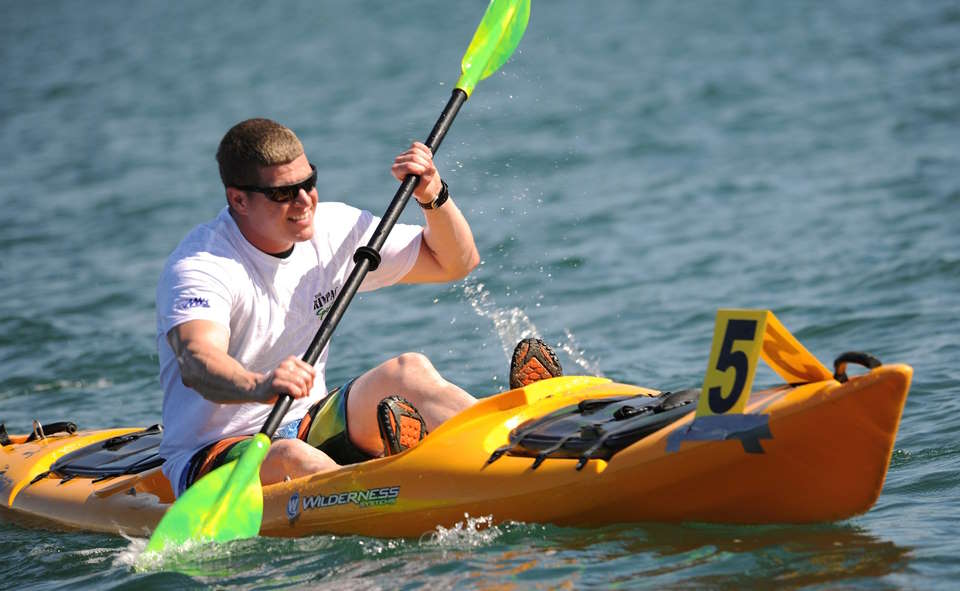Transporting your kayak safely and securely can be a daunting task, especially if you’re new to the world of roof racks. We will guide you through the process of choosing the right roof rack for your kayak, preparing your kayak for strapping, and the various techniques for securely attaching your kayak to the roof rack. We’ll also provide you with essential safety tips to ensure a worry-free journey. So, let’s get started and make your kayaking adventures even more enjoyable and stress-free!
Choosing The Right Roof Rack For Your Kayak
Choosing the right roof rack for your kayak can make a world of difference in your kayaking experience. Whether you’re a seasoned kayaker or just starting out, having a reliable and secure roof rack is essential for transporting your kayak to and from your destination. With so many options available on the market, it can be overwhelming to figure out which roof rack is best for you. But fear not, we’re here to break it down for you and help you make an informed decision.
Firstly, it’s important to consider the type of roof rack that will suit your needs best. There are two main types: J-style and stacker-style roof racks. J-style roof racks are popular among kayakers as they allow for easy loading and unloading of the kayak. The kayak sits on its side, vertically, which not only saves space but also provides a more secure fit. Stacker-style roof racks, on the other hand, allow you to transport multiple kayaks at once by stacking them horizontally. This type of roof rack is great if you often kayak with friends or family.
Another factor to consider is the weight capacity of the roof rack. It’s crucial to ensure that the roof rack you choose can support the weight of your kayak. Most roof racks have weight limits specified by the manufacturer, so be sure to check these before making a purchase. You don’t want to risk damaging your kayak or your vehicle by exceeding the weight limit. Additionally, consider the width of your kayak and make sure it will fit on the roof rack securely.
- Research customer reviews: Before making a final decision, it’s always a good idea to read customer reviews of the roof rack you are interested in. This will give you valuable insight into the quality and reliability of the product. Look for reviews that specifically mention the suitability of the roof rack for kayaks.
- Consider ease of installation: Nobody wants to spend hours struggling with complicated installation instructions. Look for a roof rack that is easy to install and doesn’t require any special tools. Some roof racks even come with detailed installation videos or guides, making the process a breeze.
- Budget: Finally, consider your budget when choosing a roof rack. While it’s important to invest in a high-quality and secure roof rack, there are options available for every budget. Set a realistic budget and prioritize features that are most important to you.
| Roof Rack Type | Pros | Cons |
|---|---|---|
| J-style | Easy to load and unload. Provides secure fit. | May take up more space on your roof. |
| Stacker-style | Allows for multiple kayaks to be transported at once. Saves space. | More difficult to load and unload. |
Remember, choosing the right roof rack for your kayak is all about finding the perfect balance between functionality, affordability, and ease of use. Take your time to research and compare different options before making a decision. Happy kayaking!
Preparing Your Kayak For Roof Rack Strapping
When it comes to preparing your kayak for roof rack strapping, there are a few important steps you should take. First and foremost, you’ll want to make sure that your kayak is clean and free of any debris. This will not only help to protect the surface of your kayak, but it will also ensure that your straps are able to securely grip the kayak without any hindrances. So, grab a bucket, some soap, and a sponge, and give your kayak a good scrub down before strapping it onto your roof rack.
Next, it’s important to inspect your kayak for any signs of wear and tear. Look for any cracks, dents, or loose fittings that could potentially cause issues during transport. We all know how frustrating it can be to discover a problem with your kayak once you’re already on the road, so taking the time to thoroughly examine your kayak before strapping it onto your roof rack is a smart move.
Once you’ve cleaned and inspected your kayak, it’s time to gather the necessary equipment for strapping it onto your roof rack. You’ll need a good set of straps that are strong and durable, as well as foam or rubber padding to cushion your kayak and protect it from any potential damage caused by the rack. It’s also a good idea to have some additional tie-downs or bungee cords on hand, just in case you need some extra security.
| Items Needed: |
|---|
|
|
|
Now that you have everything you need, it’s time to start strapping your kayak onto the roof rack. Begin by placing the foam or rubber padding on the rack to create a soft and cushioned surface for your kayak to rest on. This will help to prevent any scratches or damage to your kayak’s hull. Once the padding is in place, carefully lift your kayak onto the roof rack, making sure it is centered and secure.
Now it’s time to start strapping your kayak down. Begin by attaching the straps to the roof rack, making sure they are tightened securely. Then, loop the straps over and under your kayak, crisscrossing them for added stability. Pull the straps tight and secure them using the buckles or clips provided. Make sure to check that the straps are evenly distributed and that there are no areas where the kayak is loose or wobbly.
Lastly, give your kayak one final check to ensure that it is secure and ready for transport. Gently shake the kayak and give it a tug to make sure it is not moving or shifting on the roof rack. If everything looks good, you’re all set to hit the road and enjoy your kayaking adventure!
Strapping Techniques For Securely Attaching Your Kayak
When it comes to kayaking adventures, one of the most crucial aspects is safely and securely attaching your kayak to the roof rack of your vehicle. Strapping techniques play a vital role in ensuring that your kayak remains stable during transportation. With the right strapping techniques, you can have peace of mind and focus on enjoying your thrilling paddling experience. We will explore some effective techniques for securely attaching your kayak to a roof rack.
First and foremost, it is essential to choose the correct straps for securing your kayak. Utilizing durable and reliable straps will significantly enhance the safety of your kayak during transportation. Look for straps that are specifically designed for securing kayaks and other watercraft. These straps often have features such as built-in padding to protect your kayak’s hull and strong buckles for easy and secure fastening.
Once you have the appropriate straps, the next step is to position your kayak correctly on the roof rack. Ensure that the kayak is centered on the rack and aligned with the vehicle’s length. This proper positioning will distribute the weight evenly and minimize any risk of the kayak shifting during travel. Remember, a well-balanced kayak is a safe kayak!
- Create a secure loop around the roof rack with one end of the strap. Pass the strap through the buckle and pull it tightly to hold the kayak firmly in place. The strap should be taut but not overly tight. The goal is to have the kayak secure without causing any unnecessary pressure on its hull.
- Repeat the strapping process with another strap, this time on the opposite side of the kayak. This “crisscross” strapping technique provides additional stability and prevents the kayak from moving side to side. Cross the straps over the top of the kayak and loop them around the roof rack on the other side. Again, tighten the straps snugly without putting excessive pressure on the kayak.
- To further secure your kayak, consider using additional straps to strap it to the front and rear of your vehicle. Attach these straps to the kayak’s grab handles or other designated attachment points. These straps will help prevent any forward or backward movement of the kayak during transportation, keeping it securely in place.
In addition to the strapping techniques mentioned above, it is crucial to make periodic stops during your journey to check the straps’ tension. Over time, the straps may loosen due to wind or vibration, so it is essential to ensure that they remain tightened throughout the entire trip.
| Strapping Techniques: | Benefits: |
|---|---|
| Properly centering the kayak on the roof rack | Even weight distribution and reduced risk of shifting |
| Using a crisscross strapping technique | Additional stability and minimized side-to-side movement |
| Using additional straps for front and rear attachment | Preventing forward or backward movement |
By following these strapping techniques, you can confidently transport your kayak without worrying about it coming loose or getting damaged. Remember, safety should always be a top priority when it comes to outdoor adventures. Happy kayaking!
Safety Tips For Transporting A Kayak On A Roof Rack
Transporting a kayak on a roof rack can be both exciting and challenging. While it offers a convenient way to transport your kayak to your favorite paddling spot, it also comes with certain risks and dangers that need to be addressed. We will provide you with some safety tips to ensure that your kayak remains secure on your roof rack throughout the journey.
1. Choose the right kayak roof rack: Before setting off on your adventure, it’s essential to ensure that you have the appropriate roof rack for your kayak. Make sure that the rack can support the weight of your kayak and is specifically designed for transporting kayaks. This will minimize the risk of accidents or damage to your kayak.
2. Check the condition of your roof rack: Before loading your kayak, thoroughly inspect your roof rack to ensure that it is in good condition. Look for any signs of wear and tear, loose bolts, or rust. It is crucial to fix any issues or replace any damaged parts before embarking on your journey.
3. Properly secure your kayak: It is essential to properly secure your kayak to the roof rack to prevent it from shifting or falling off during transit. Use high-quality straps and tie-downs to secure your kayak tightly. Wrap the straps around the kayak’s hull and attach them firmly to the roof rack. Make sure there is no slack in the straps to prevent any movement during travel.
4. Check the visibility: Whenever you transport a kayak on your roof rack, it can obstruct your rearview mirror’s visibility. Ensure that your side mirrors are adjusted properly to compensate for the restricted viewing angle. If necessary, you can attach additional mirrors to provide a clear view of the surrounding traffic.
| Caution: |
|---|
| Strapping your kayak incorrectly or inadequate securing can result in an accident or damage to your kayak and other vehicles on the road. It is vital to follow proper strapping techniques and ensure the kayak is firmly attached to the roof rack. |
5. Drive cautiously: While transporting a kayak on your roof rack, it’s important to adjust your driving style to ensure everyone’s safety on the road. Reduce your speed and maintain a safe distance from other vehicles. Take corners and turns gently, keeping in mind the extra height and weight on your roof rack.
6. Frequent checks: During your journey, periodically check the straps and tie-downs to ensure they remain tight and secure. Stop at a safe location to make any necessary adjustments if you notice any loosening or shifting of the kayak. Regular checks will help you avoid any accidents caused by loose straps.
By following these safety tips, you can enjoy a worry-free journey while transporting your kayak on a roof rack. Remember, safety should always be a top priority, so take the necessary precautions and enjoy your paddling adventures to the fullest!








